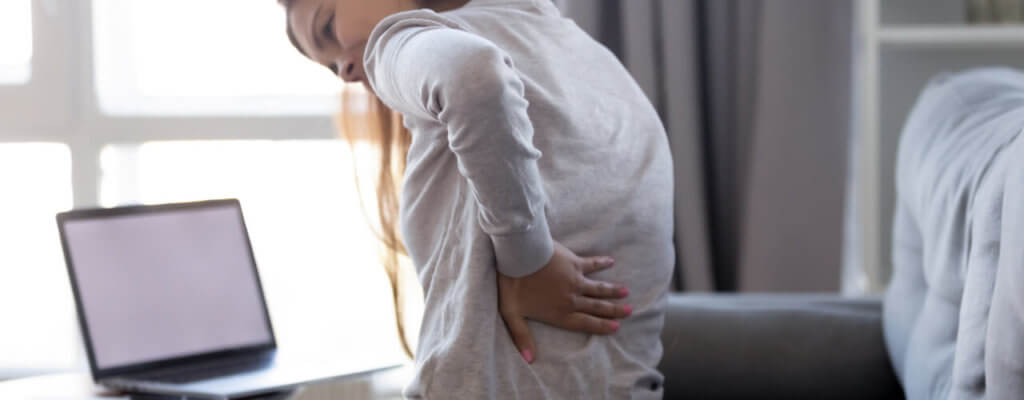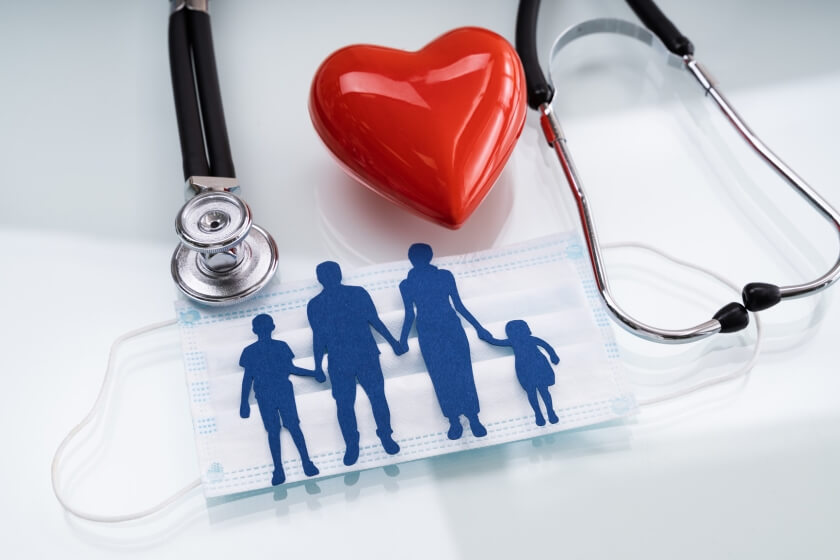Have you noticed that you’re experiencing pain when you bend over to put your shoes on, or pick something up? Is your back stiff, sore, or achy in the morning when you get out of bed? Do you notice a feeling of numbness in your arms or legs?
If you’re experiencing these symptoms, you might have a herniated disc. Call Houghton Physical Therapy today to learn more about how our skilled therapists can help you become pain-free without the use of drugs or expensive surgeries.
What Is a Herniated Disc?
Between the 33 vertebral bones in your spine are small cushion-like structures called spinal discs. These discs improve mobility and shock absorption in the spinal colum n.According to ChoosePT, a herniated disc occurs when the disc between the bones of the spine is torn, and the gelatin-like core of the disc leaks.
Sometimes, the outer layer of a spinal disc, called the annulus fibrosus, tears. If this happens, the disc’s inner gel-like core, called the nucleus pulposus, can leak through this ruptured tissue. The now “herniated” disc can alter the adjacent joint mechanics and compress and irritate nearby spinal nerve roots. Herniated discs are often incorrectly called “slipped discs.” However, a disc doesn’t “slip” so much as it ruptures and encroaches onto the surrounding tissues.
Another related disc condition is called a “bulging disc.” In this case, the outer layer of a disc remains intact, but the inner gel-core still protrudes and presses out abnormally. This results in inflammation and pain in the corresponding area, and is also reason to visit a physical therapist!
Do I Have a Herniated Disc?
Herniated discs can occur anywhere in the spine, but they’re the most common in the neck (cervical spine) and lower back (lumbar spine).
The leading causes and risk factors for herniated discs include:
- Trauma, such as a car accident or slip and fall
- Male gender (men are two times as likely to be diagnosed with a herniated disc than women)
- Poor posture
- Getting older, especially ages 30-50 (discs tend to lose fluid and elasticity as we get older, and become more susceptible to damage)
- Sedentary lifestyle, not getting enough exercise
- Repetitive heavy lifting, bending, and/or twisting
- Obesity
- Smoking
- Family history
Sometimes herniated discs present with no symptoms, however, when symptoms do occur, they can range from mild to severe and vary depending on where the herniated disc occurs. According to Mayoclinic, “most herniated disks occur in the lower back, although they can also occur in the neck. Signs and symptoms depend on where the disk is situated and whether the disk is pressing on a nerve. They usually affect one side of the body.” These can include:
- Clumsiness, limping, or tripping due to a weakened hand or foot
- Stiffness and reduced mobility in the spine
- Pain, numbness, tingling, weakness, and/or abnormal reflexes in an arm or leg
- Pain that worsens in the morning
- Pain that worsens or moves further down an arm or leg (peripheralizes) when a person bends forward, coughs, sneezes, or sits for a long time
- Pain that improves or moves up an arm or leg (centralizes) when a person extends their spine, lies on their stomach, or leans to one side
How Can Physical Therapy Relieve My Pain?
Research shows that except in extreme cases, conservative treatment like physical therapy is more effective at treating a herniated disc than surgery and pain medications.
At our clinic, our physical therapists can help you find relief by:
- Diagnosing your condition: We conduct thorough physical examination tests and look into your medical history to diagnose a herniated disc and rule out other conditions
- Treating your condition: Our initial treatment goals for your condition focus on relieving pain and inflammation, healing the injured disc, alleviating compressed nerves, and restoring normal mobility in your spine. Your physical therapist will use a variety of techniques including stretches, massages, joint mobilizations, therapeutic exercises, and modalities such as cold laser therapy and electrical stimulation.
- Preventing recurring problems or injuries: Your therapist can not only diagnose and treat your pain condition. He or she can also teach you how to improve your posture and body mechanics, improve the strength and conditioning of your core, and enhance spinal health through healthy lifestyle changes(e.g., smoking cessation, increasing physical activity, improved nutrition, etc.) to ensure that you don’t find yourself off your game again due to a herniated disc.
Contact Us For Relief & More Information
At our clinic, it’s our ultimate goal to give you the proper diagnosis and treatment so that you feel better faster. We want to find and address the root cause of your disc herniation so you can avoid chronic pain and dysfunction. If you think your pain symptoms could be the result of a herniated disc, don’t waste any more time. Contact us today for more information on our pain relieving physical therapy solutions.



